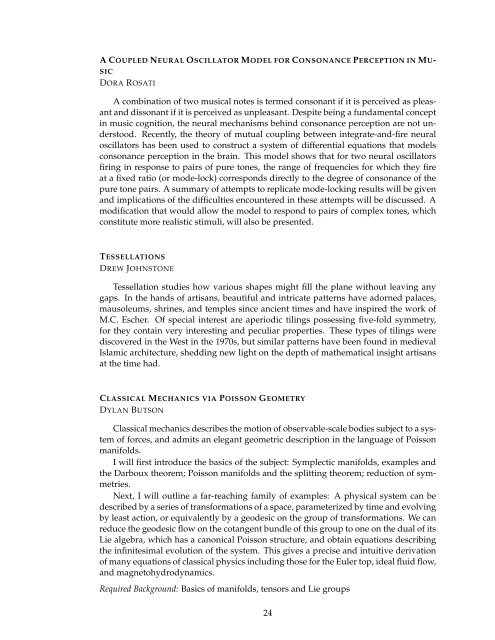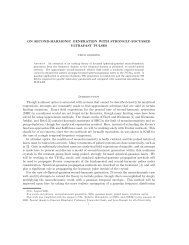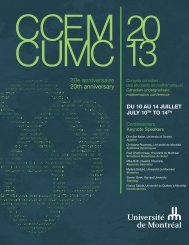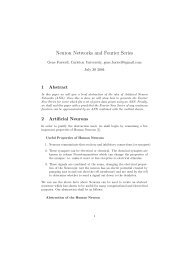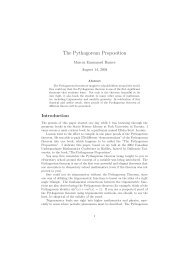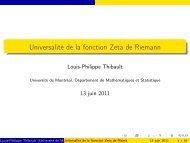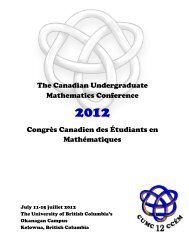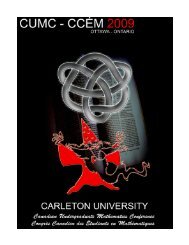booklet - CUMC - Canadian Mathematical Society
booklet - CUMC - Canadian Mathematical Society
booklet - CUMC - Canadian Mathematical Society
You also want an ePaper? Increase the reach of your titles
YUMPU automatically turns print PDFs into web optimized ePapers that Google loves.
A COUPLED NEURAL OSCILLATOR MODEL FOR CONSONANCE PERCEPTION IN MU-SICDORA ROSATIA combination of two musical notes is termed consonant if it is perceived as pleasantand dissonant if it is perceived as unpleasant. Despite being a fundamental conceptin music cognition, the neural mechanisms behind consonance perception are not understood.Recently, the theory of mutual coupling between integrate-and-fire neuraloscillators has been used to construct a system of differential equations that modelsconsonance perception in the brain. This model shows that for two neural oscillatorsfiring in response to pairs of pure tones, the range of frequencies for which they fireat a fixed ratio (or mode-lock) corresponds directly to the degree of consonance of thepure tone pairs. A summary of attempts to replicate mode-locking results will be givenand implications of the difficulties encountered in these attempts will be discussed. Amodification that would allow the model to respond to pairs of complex tones, whichconstitute more realistic stimuli, will also be presented.TESSELLATIONSDREW JOHNSTONETessellation studies how various shapes might fill the plane without leaving anygaps. In the hands of artisans, beautiful and intricate patterns have adorned palaces,mausoleums, shrines, and temples since ancient times and have inspired the work ofM.C. Escher. Of special interest are aperiodic tilings possessing five-fold symmetry,for they contain very interesting and peculiar properties. These types of tilings werediscovered in the West in the 1970s, but similar patterns have been found in medievalIslamic architecture, shedding new light on the depth of mathematical insight artisansat the time had.CLASSICAL MECHANICS VIA POISSON GEOMETRYDYLAN BUTSONClassical mechanics describes the motion of observable-scale bodies subject to a systemof forces, and admits an elegant geometric description in the language of Poissonmanifolds.I will first introduce the basics of the subject: Symplectic manifolds, examples andthe Darboux theorem; Poisson manifolds and the splitting theorem; reduction of symmetries.Next, I will outline a far-reaching family of examples: A physical system can bedescribed by a series of transformations of a space, parameterized by time and evolvingby least action, or equivalently by a geodesic on the group of transformations. We canreduce the geodesic flow on the cotangent bundle of this group to one on the dual of itsLie algebra, which has a canonical Poisson structure, and obtain equations describingthe infinitesimal evolution of the system. This gives a precise and intuitive derivationof many equations of classical physics including those for the Euler top, ideal fluid flow,and magnetohydrodynamics.Required Background: Basics of manifolds, tensors and Lie groups24


